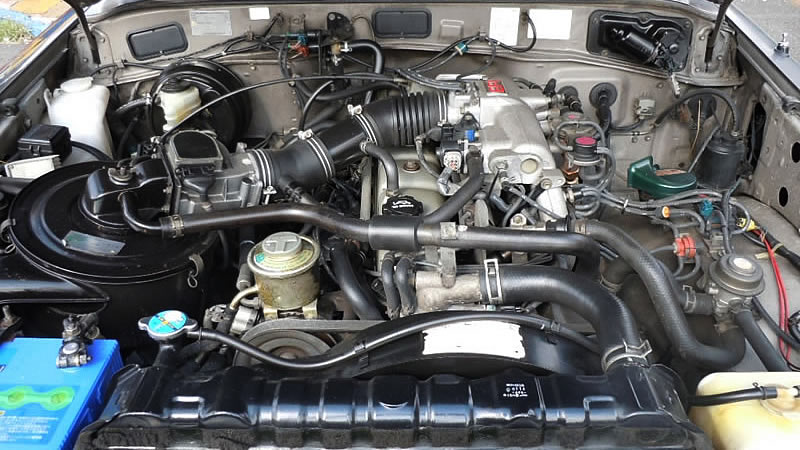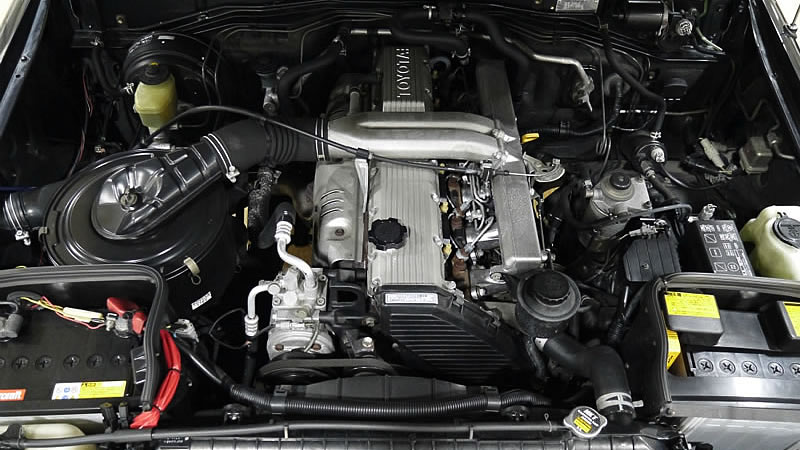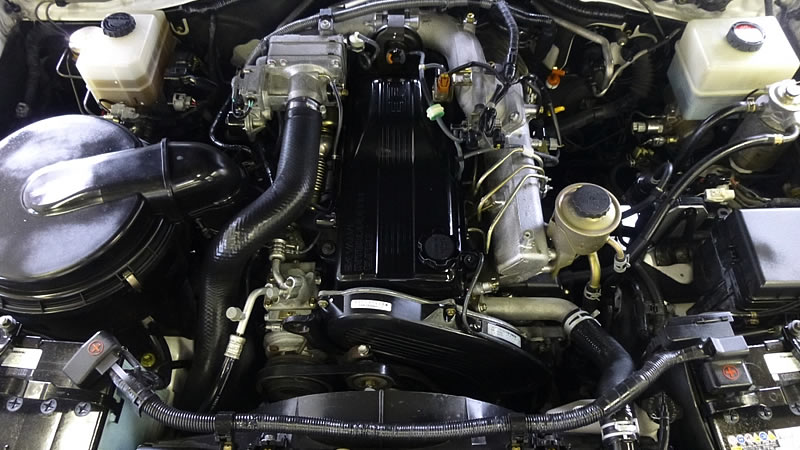Land Cruiser 80’s main engine was a turbo diesel
Toyota sold the Land Cruiser 80 between 1990 and 1998, which was the height of the ‘4WD boom’. Like the previous Land Cruisers before, it was considered the highest domestic 4WD due to an economic bubble, even though its primary market was overseas in Australia and North America. It is considered one of the finest due to the time and money Toyota put into making this a high-quality vehicle, even down to the smallest of details.
Since its model cycle was longer than ordinary passenger cars, Toyota had the flexibility to make small improvements over its lifespan, and that included the ability to upgrade the gas and diesel engines as they made model changes.
The Land Cruiser 80 was developed to meet the luxury vehicle needs, so Toyota had to up the engines to top performance engines in order to compete.
Let’s look at the successive engines under the Land Cruiser 80’s hood.
Engine history

3F-E type gasoline
The EF-E type gasoline engine was handed down from the Land Cruiser 60 wagon (FJ62G) and dropped into the Land Cruiser 80 wagon.
It is a 3599 cc inline-6 OHV unit that was derived from the intake system of the 3F model, which up until this time, had a carburetor. This new engine was designed with electronically controlled injects and generated a maximum output of 155 PS / 152 HP at 4,200 RPMs and a maximum torque of 29.5 KGM / 29.5 lb. ft. at 2,600 RPM.
This engine was top of its class in high-powered motors in domestic 4WD vehicles at its time, but when you compare it to the 3F carbureted model, the maximum torque value was 0.5kgm / 3.61 lb. ft. lower while generating a rotation of 400 RPM more. It was not a popular engine among cross-country fans.
However, it can be said that the engine played an important role as the final model of the “F” that fascinated Land Cruiser fans as a powerful large-displacement gasoline engine from the beginning of the Land Cruiser.
https://www.flexnet.co.jp/wordpress/wp-content/uploads/2015/11/94_003_1FZ-FE.jpg”>
1FZ-FE type gasoline
The performance of the diesel turbo (1HD-T type) was superior both on the highway and off-road, destroying the image that the 3F-E gasoline vehicles are the strongest. The gasoline-powered 1FZ-FE type was introduced in 1992, which upgraded the old Land Cruiser gas-powered engine. It was a 4,476cc in-line 6 DOHC unit that produced a maximum output of 215PS/ 212 HP at 4,200rpm and a maximum torque of 38.0kgm/ 274 lb ft. at2,600rpm, thus redeeming the Land Cruiser gasoline engine.
As you can see from the specs, even though the power/torque has been greatly improved, the number of revolutions generated is the same, making it an engine that was highly valued for its ease of handling.

1HZ Diesel
For the entire Land Cruiser 80’s existence, it has offered the 1HZ type, non-turbo diesel. This is a 4,163cc straight 6 OHC, the same as the turbo car, and it is a solid NA (naturally aspirated) diesel that exhibits a maximum output of 135PS/ 133 HP at 3,600rpm and a maximum torque of 28.2kgm/ 112 lb. ft. at 2,000rpm. It was installed in basic models such as the early STD (standard) and GX, which are often used as utility vehicles or work vehicles.
It’s undeniably weaker than the turbocharged engine installed in the upper models, but the advantage of a non-turbo engine is that there is no drop in torque at low revs where the turbo doesn’t work, and the wide power and torque band make it easy to handle. It was well received and was supported by users who use the Land Cruiser 80 as a practical vehicle or as a cross-country vehicle.

1HD-T Diesel Turbo/1HD-FT Diesel Turbo
The 1HD-1 was the first engine in the Land Cruiser 80 until it was replaced in 1995 with the 1HD-FT type, which was an improved version of the 1HD-1 featuring direct injection.
Due to exhaust gas regulations tightening, the 1HD-T was changed to a single cam with four intake and exhaust valves per cylinder to make combustion more efficient, achieving cleaner exhaust gas.
With this improvement, the maximum output has increased from 165PS/ 163 HP at 3,600rpm to 170PS/168 HP at 3,600rpm, and the maximum torque has increased from 37.0kgm/ 148 lb. ft. at 2,000rpm to 38.7kgm/ 159 lb. ft. at 2,500rpm.
The FZJ80, which boasts over 200PS / 197 HP, was considered a model suitable for the highest peak of domestic 4WD, but in terms of actual sales, the HDJ81V equipped with a diesel turbo is overwhelmingly popular, making the diesel turbo the mainstream engine in the 4WD.



